If you want to brighten up your indoor space but lack natural light, you’re in luck.
There are many indoor plants that do well in low light.
They add a touch of greenery to your home without needing much sunlight.
In this guide, we will look at 8 easy-to-care-for indoor plants. We’ll also share some tips for keeping your indoor oasis thriving.
Chinese Evergreen (Colorful Foliage for Low Light)
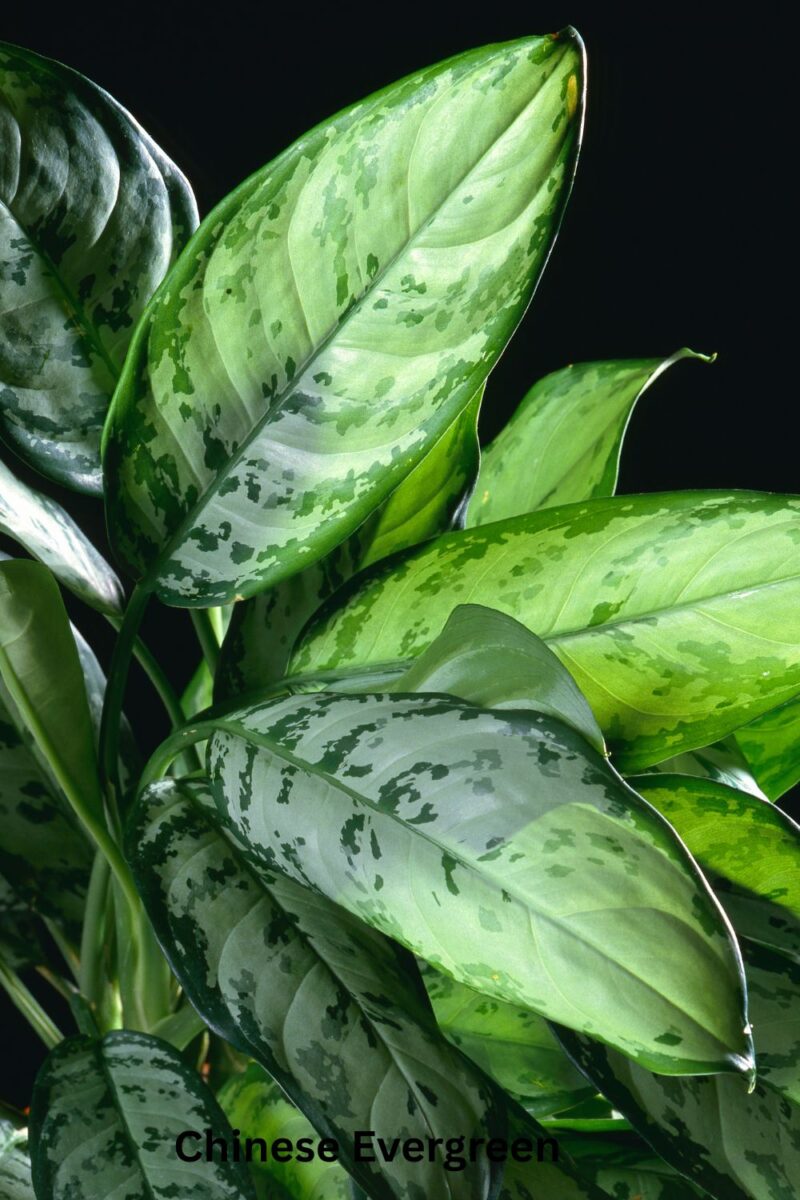
The Chinese Evergreen is a lovely addition to any indoor plant collection, especially for those who may struggle to provide ample sunlight.
With its vibrant green leaves accented by striking red and orange hues, it brings a splash of color to your space.
This plant thrives in low light, making it perfect for corners of rooms or areas where sunlight isn’t abundant.
It’s also relatively easy to care for, which is a plus for anyone new to indoor gardening or who may not have a green thumb.
To keep your Chinese Evergreen healthy, it’s important to provide well-draining soil and water it only when the top inch of soil feels dry.
Overwatering can lead to root rot, so it’s better to be cautious. Additionally, wipe down the leaves occasionally to remove dust and encourage healthy growth.
If you want to boost its growth, consider using a balanced liquid fertilizer every few months during the growing season.
This will help ensure that your plant remains lush and vibrant. Remember, it’s not just about having plants; it’s about enjoying the process of nurturing them!
2). Pothos (Versatile Vine for Shaded Spaces)
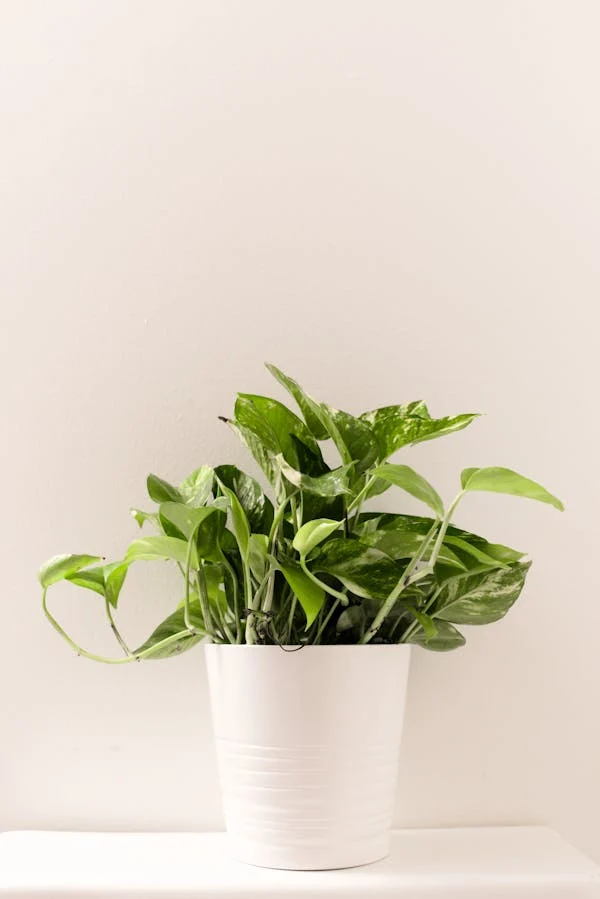
Pothos is a fantastic choice for anyone looking to brighten up shaded areas in their home.
Its long, trailing vines and heart-shaped leaves make it a visually appealing addition to your indoor garden.
This plant thrives in low-light conditions, making it one of the top picks among the 8 indoor plants that need minimal sunlight.
To grow pothos successfully, consider placing it on high shelves or in hanging baskets.
This allows its beautiful vines to cascade down, adding a touch of nature to any room. You’ll find that it can adapt to various environments, so feel free to experiment with different spots.
For maintenance, pothos is quite forgiving. Water it only when the top inch of soil feels dry, which helps prevent overwatering.
Additionally, wiping the leaves occasionally will keep them dust-free and enhance their vibrant color. If your plant starts to look a bit leggy, don’t hesitate to trim it back a little.
This encourages bushier growth and keeps your pothos looking lush.
Overall, adding pothos to your space is an easy way to enjoy the benefits of indoor plants without the worry of too much sunlight.
With its beautiful appearance and low maintenance needs, it’s an excellent choice for anyone wanting to green up their space.
3). Spider Plant (Air Purifier for Dim Areas)
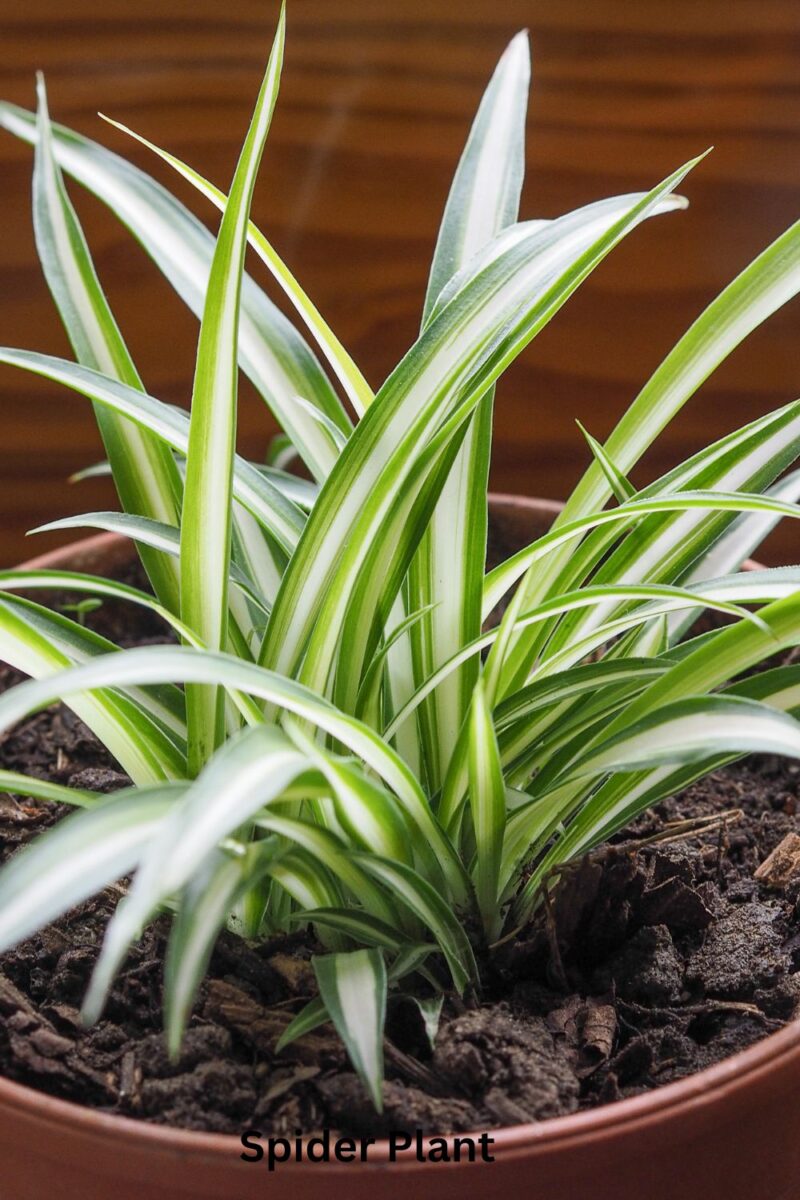
The spider plant is a popular choice among indoor plants that thrive in low-light conditions.
Its long, arching leaves and unique growth pattern make it an attractive addition to any space.
This plant doesn’t just look good; it also acts as a natural air purifier, helping to remove toxins from the air while requiring minimal sunlight.
To keep your spider plant healthy, place it in a spot that receives indirect light.
It can adapt well to dim areas, making it perfect for offices or rooms with limited sunlight exposure.
Regular watering is essential, but be careful not to overdo it. Allow the top inch of soil to dry out before watering again.
Maintenance is simple. Trim any brown tips from the leaves, and repot every couple of years to provide fresh soil.
If you notice small offshoots, or ‘pups,’ you can propagate them easily by placing them in water until they develop roots.
Incorporating a spider plant into your collection of 8 indoor plants that need minimal sunlight can enhance both your decor and your air quality.
4). ZZ Plant (The Ultimate Low-Maintenance Greenery)

The ZZ plant is a fantastic choice for anyone looking to add greenery to their space without a lot of fuss.
With its striking, glossy leaves, it brings a pop of life to any room.
Plus, it thrives in low-light conditions, making it perfect for those areas in your home that don’t get much sunlight.
This plant is not just a pretty face; it’s also incredibly hardy.
ZZ plants can tolerate neglect, so if you forget to water it occasionally, it will forgive you.
Just make sure to provide well-draining soil to prevent root rot.
When watering, let the soil dry out completely between sessions, as overwatering can be more harmful than underwatering.
For the best results, place your ZZ plant in a spot where it can receive indirect sunlight.
It will adapt to lower light levels without any issue.
If you’re looking to incorporate this plant into your home, try keeping it in a corner of your living room or on a shelf in your office.
It will add an inviting touch without demanding too much attention.
To keep your ZZ plant thriving, wipe down its leaves occasionally to remove dust.
This not only helps the plant breathe but also enhances its shine.
Fertilizing once every few months during the growing season will provide it with the nutrients it needs. With these simple care tips, your ZZ plant will continue to be a lovely addition to your indoor plants collection.
5). Snake Plant (Resilient Beauty for Low Light)
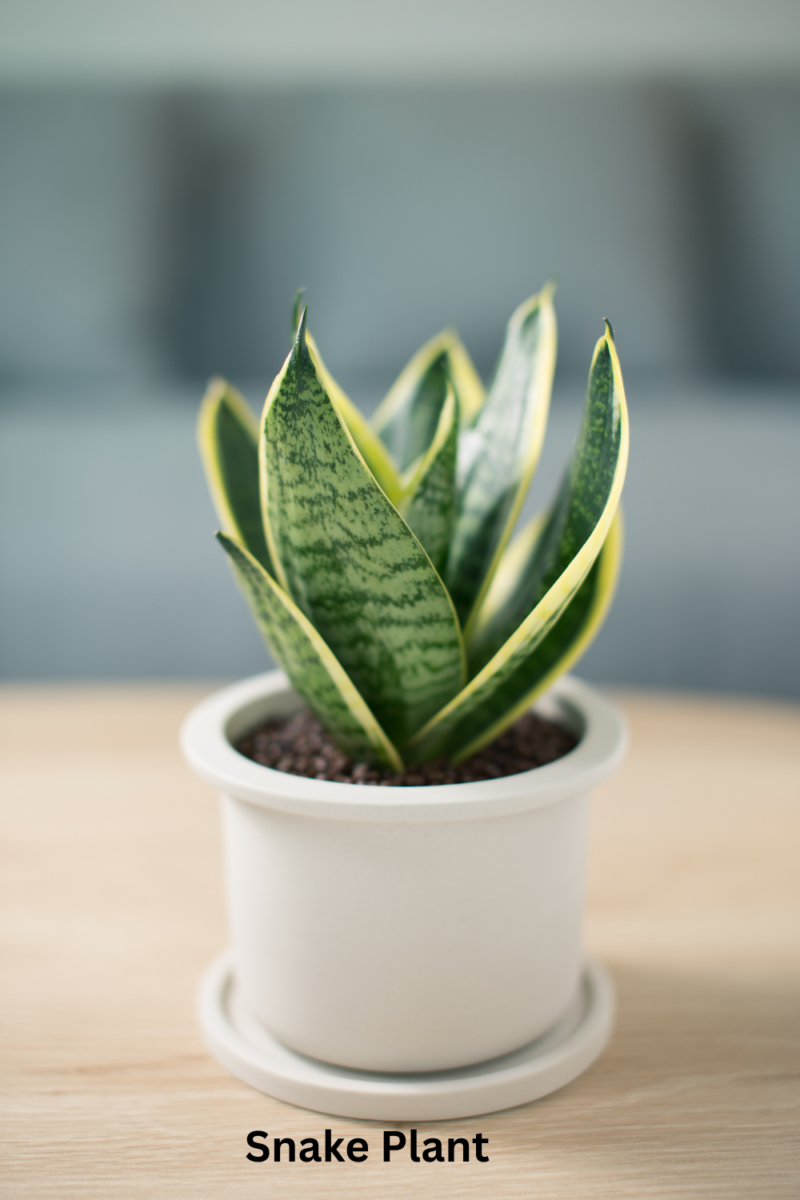
Snake Plant
The Snake Plant, often admired for its tall, striking leaves, is a perfect choice for those looking to bring some greenery into spaces with minimal sunlight.
Its long, sword-like leaves, which can reach impressive heights, thrive even in darker corners of your home.
The image beautifully captures this plant’s elegance, showcasing its vibrant green leaves that add a refreshing touch to any room.
One of the best features of the Snake Plant is its resilience.
It requires very little maintenance, making it an ideal indoor plant for both beginners and seasoned plant lovers.
To ensure it stays healthy, place it in a pot with good drainage.
Remember, it prefers to dry out between waterings, so only water it when the top inch of soil feels dry. Overwatering can lead to root rot, which is the main issue to avoid!
For optimal growth, try to keep it in indirect light, though it can handle direct sunlight too.
If you notice the leaves starting to yellow, that might be a sign that it’s getting too much water or light.
Another great tip is to wipe the leaves with a damp cloth occasionally; this helps keep them dust-free and enhances their ability to photosynthesize.
In summary, incorporating a Snake Plant into your home is a simple way to enjoy the benefits of indoor plants while requiring minimal effort.
This plant not only enhances your decor but also purifies the air in your space, making it a lovely addition to any room.
6). Parlor Palm (A Touch of Tropical Charm Indoors)
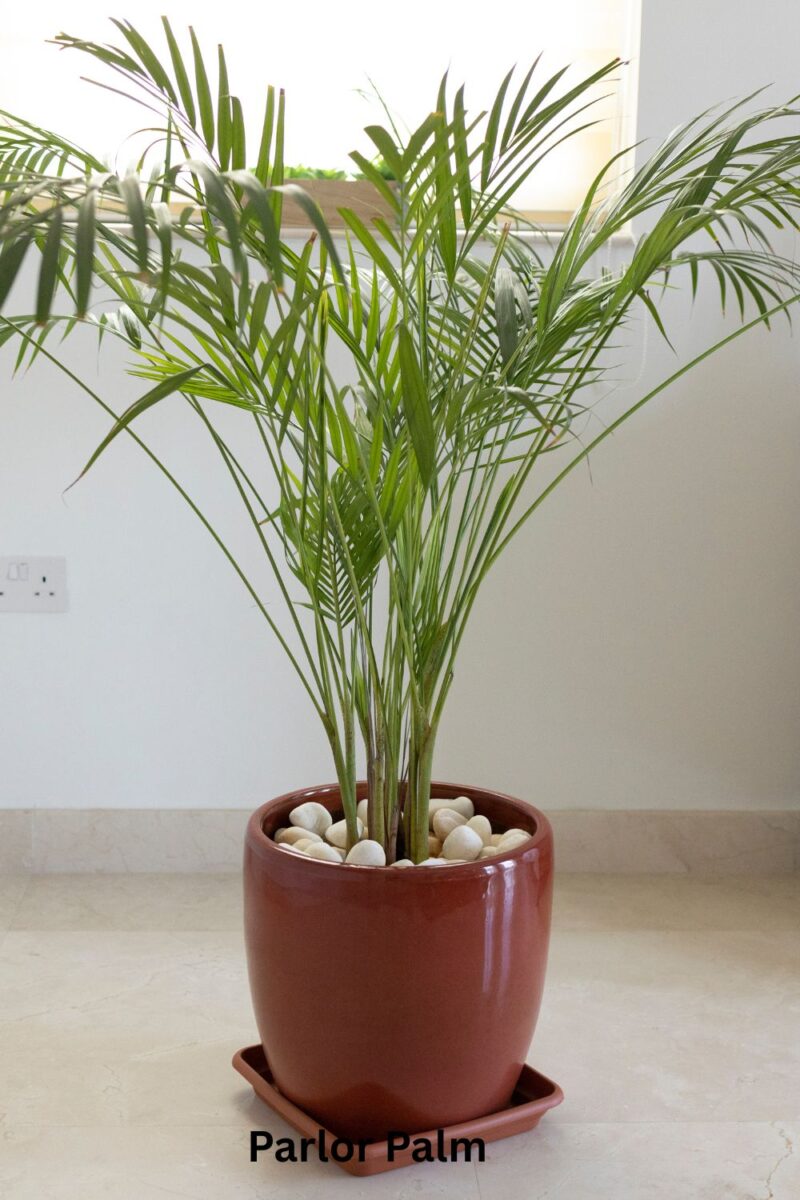
The Parlor Palm is a delightful addition to any indoor space, especially for those who love a touch of tropical flair.
Its lush, feathery fronds create a beautiful visual that brightens up corners without demanding too much light.
This plant thrives in low to medium light, making it perfect for rooms that might not get the sunniest exposure.
To keep your Parlor Palm happy, place it near a window with filtered light or in a well-lit room. It doesn’t like direct sunlight, so avoid spots where harsh rays can scorch its leaves. Give it a gentle rotation every few weeks to encourage even growth.
When it comes to maintenance, the Parlor Palm is quite forgiving.
Water it regularly but allow the top inch of soil to dry out between waterings.
Overwatering can lead to root rot, so make sure your pot has good drainage. During the growing season, you can feed it with a balanced fertilizer every month to help it thrive.
This plant not only adds charm to your home but also purifies the air, making your space feel fresher.
Plus, it’s pet-friendly, so you don’t have to worry if you have furry friends wandering around.
7). Cast Iron Plant (Tough and Tolerant)

The Cast Iron Plant, with its lush green leaves, is a true champion among indoor plants.
This hardy plant thrives in low light conditions, making it perfect for those cozy corners of your home that don’t see much sun.
Its dark green foliage adds a vibrant touch to any room, and it can grow quite tall, reaching impressive heights over time.
One of the best aspects of the Cast Iron Plant is its resilience. It can tolerate neglect, which means you don’t have to worry too much about its care.
If you forget to water it occasionally, it won’t hold it against you! This makes it an excellent choice for busy individuals or those new to indoor gardening.
For implementation, simply choose a pot with good drainage and place it in a spot with indirect sunlight.
A little bit of water goes a long way, so ensure the soil dries out between waterings.
Keeping it in a humid environment can also boost its growth, but it’s not a requirement.
When it comes to maintenance, wipe the leaves occasionally to remove dust.
This keeps them healthy and allows the plant to breathe better. If you notice any yellowing leaves, it might be a sign of overwatering, so adjust your watering schedule accordingly.
The Cast Iron Plant is forgiving and will bounce back as long as you pay a little attention.
In summary, the Cast Iron Plant is an ideal choice among the 8 Indoor Plants That Need Minimal Sunlight.
Its tough nature and low maintenance needs make it a beloved plant for many indoor gardeners.
8). Peace Lily (Elegant Blooms in Indirect Light)

Peace Lily
The Peace Lily is a lovely choice for indoor gardening, especially if your space doesn’t get much direct sunlight.
Its beautiful white blooms and lush green leaves can brighten up any room while requiring minimal light.
This makes it an ideal plant for anyone looking to add some greenery without needing to fuss over light requirements.
When caring for a Peace Lily, place it near a window with filtered light.
Too much direct sunlight can scorch its leaves, while too little light might hinder blooming. Aim for a balance that allows the plant to thrive in indirect sunlight.
Watering is also key to keeping your Peace Lily happy. Make sure to allow the top inch of soil to dry out before watering again.
They are forgiving plants, so if you forget, they will let you know by drooping slightly. Just give them a drink, and they’ll perk right back up!
To maintain your Peace Lily, keep an eye on its leaves.
Dust can accumulate, so gently wipe them down with a damp cloth from time to time.
Additionally, fertilizing every few months during the growing season can help promote healthy growth and beautiful blooms.
In summary, the Peace Lily is a fantastic addition to your collection of indoor plants that need minimal sunlight. With the right care, it will reward you with elegant blooms and add a touch of tranquility to your home.




